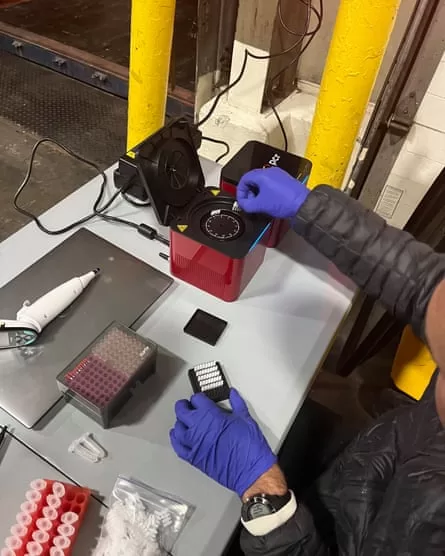Last year, a colleague of Diego Cardeñosa sent the international shark trade researcher a few pieces of shark fin taken from a bowl of soup in New York City. Using a PCR test similar to those used during the Covid-19 pandemic to test for the virus, Cardeñosa was able to identify the species behind the fin as sandbar shark, an endangered species found in tropical and warm-temperate waters.
Now, Cardeñosa and other scientists from Florida International University, alongside law enforcement officials from the US National Oceanic and Atmospheric Administration (Noaa), plan to deploy the tests at ports across the country in order to crack down on seafood fraud and fish trafficking.
Illegal fishing adversely affects legitimate commercial fishers as well as fish populations. Almost a third of shark species are threatened or near threatened with extinction and the value of world trade in shark parts is almost $1bn a year, according to the UN.

At the same time, US consumption of seafood is increasing, rising by more than 30% in the decade from 2002. About 80% of this comes from foreign exports – mostly from Canada, Chile, India, Indonesia and Vietnam, according to the US department of agriculture.
The PCR device uses genetic markers developed for more than 100 species including great whites, hammerheads, makos, oceanic whitetips, threshers and whale sharks. Other species whose genetic markers have been developed for the PCR device include all Atlantic tuna species and European eel.
Once samples are added into the device, the genetic markers produce a specific chemical reaction depending on which fish species is being tested for.
Cardeñosa recently tested a container labeled as “American eel” for European eel. Upon performing the tests using eel samples from the container, the PCR devices lit up, he said, confirming the presence of European eel. “If none of the samples light up or give you an increase in fluorescence in the tube, that means none of those tubes have European eel in them,” he said.
The tools are designed to give law enforcement officers enough preliminary evidence to stop a shipment, he added.
Typical port inspections currently consist of visual identifications of fish species yet, according to Noaa, the vast majority of fish and seafood products imported into the US enter as filets, processed fish products or shark fins without carcasses. As a result, relying on visual inspections to identify species can be incredibly challenging.
Noaa spokesperson James Miller said: “Deployment of the PCR device will allow officers to conduct genetic analysis in real-time during inspections and detect seafood fraud.”
The device also saves money. The submission and analysis of a single fish sample to a government forensic laboratory can cost several hundred dollars. In contrast, the cost of collection and analysis of a fish sample taken in the field using the PCR device costs less than $1.
“These efforts protect US consumers, who can feel safe knowing they are buying legal and safe seafood,” Miller said.
